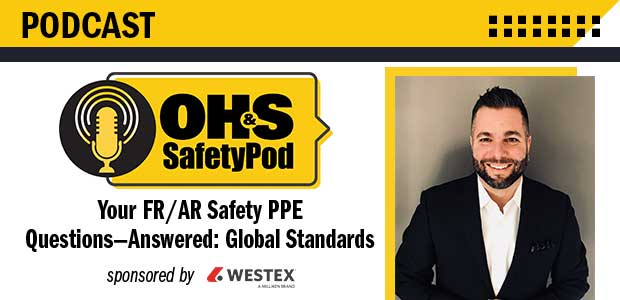
In today’s world, disposable gloves have become both increasingly scarce and expensive, making alternatives more necessary than ever.

Footwear is a significant part of protection for workers that requires several components to make it as effective as possible.

With the entrance of PPE in the public’s everyday vocabulary, it is important to note differences in masks and respirators.

How a new technology is delivering next-generation comfort, dexterity and protection within industrial work gloves.

Episode 49
In this episode, Editor Sydny Shepard discusses anticipated changes safety professionals should look out for after the inauguration of President-Elect Joe Biden on January 20, 2021.

Out of over 1,000 workplace lawsuits that were filed, 200 concerned coronavirus safety protocols.

Episode 47
In this episode of the podcast, Editor Sydny Shepard walks listeners through what she believes will be the biggest safety trends in 2021.
It is important that workers know how to properly put on and take off their PPE to protect themselves and those in their households.

Episode 44
In this mini episode of the podcast, Editor Sydny Shepard discusses a newly revised construction standard for multi-employer sites and the FDA's approval of a new at-home test for COVID-19 and the flu.
Maryland nursing homes are requiring staff to undergo PPE training after a statewide surge in COVID-19 cases in nursing homes and assisted living facilities.

Eye injuries on the job today are far too common. Employers should conduct risk assessments to determine hazards and protect against them.

Successfully combining vision protection with face coverings to protect workers from COVID-19 may be logistically challenging, but it is not impossible.

Hand protection for workers during chilly and windy environments should not be a second thought, as cold stress can lead to several hazardous conditions.
OH&S has been celebrating innovation and products optimized to keep workers safe for over 10 years.

There’s no official checklist or cheat sheet to make sure hearing testing is an effortless experience—some things come with experience and time.

Your guide to choosing the best winter work gloves.

Episode 41
Interested in how to create an effective FR/AR program that works globally? Tune in as Editor Sydny Shepard talks with Paul Castelli, Westex's International Sales Director, about standards and certifications that transcend location.
The updated FAQ addresses the question of whether cloth face masks qualify as PPE.
Sustainability is a hot topic, but does it have any real meaning for industrial PPE?

The CDC confirms that wearing a cloth mask can protect individuals from catching the coronavirus, not just those around them.